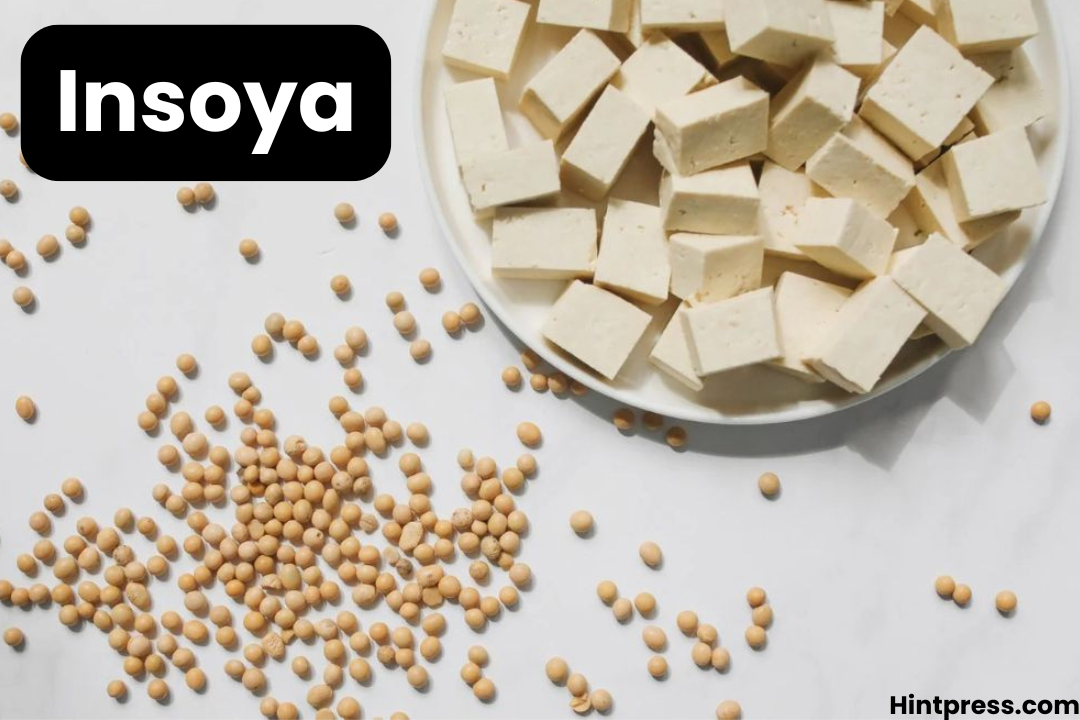Insoya: A Modern Innovation for a Healthier Future

In today’s world, the search for healthier, more sustainable food sources continues to grow. Among the many innovations making headlines, insoya stands out as a fascinating topic of discussion. Whether you are passionate about nutrition, sustainability, or food technology, understanding insoya can help you appreciate how modern science and nature can work together for a better tomorrow.
Introduction to Insoya
Insoya is an innovative soy-based product designed to offer both health and environmental benefits. It is created through advanced processing methods that enhance soy’s natural proteins while maintaining its rich nutritional profile. The goal of this is to make plant-based nutrition more accessible, tasty, and sustainable for everyone.
Interestingly, insoya does not just replicate traditional soy products—it improves upon them. It offers higher protein concentration, better digestibility, and a neutral flavor that fits easily into many diets. As people seek healthier lifestyles, this becomes an ideal choice for those looking to replace meat or dairy without losing essential nutrients.
Moreover, insoya aligns perfectly with the global movement toward reducing carbon footprints and promoting plant-based diets. As food innovation progresses, this represents a bridge between health, technology, and sustainability.
The Origin and Concept of Insoya
The concept of insoya comes from the growing demand for efficient and sustainable protein alternatives. Traditional soy has long been known as a rich source of plant-based protein, but it also comes with limitations—flavor, texture, and digestibility being the main concerns.
Insoya was developed as an answer to these issues. By using innovative processing techniques, producers can isolate and enhance the most beneficial components of soybeans. This process results in a product that maintains soy’s natural value but eliminates some of its less desirable traits, such as bitterness or beany aftertaste.
The term insoya combines “innovation” and “soya,” symbolizing the blending of science and nature. This modern approach not only benefits consumers but also contributes to sustainable agriculture.
Nutritional Value of Insoya
When it comes to nutrition, insoya offers impressive benefits. It contains high-quality plant protein, essential amino acids, and very little fat. Compared to regular soy or tofu, this tends to have higher protein density and easier absorption.
Key nutritional benefits include:
- High protein content for muscle growth and repair
- Low saturated fat for heart health
- Essential amino acids for balanced nutrition
- Iron and calcium for bone and blood health
- Naturally cholesterol-free
Because of its nutrient balance, insoya has become a preferred choice for athletes, vegans, and anyone seeking better nutrition without animal products.
Health Benefits of Insoya
Insoya plays an important role in promoting better health. Its plant-based composition supports heart health and helps reduce cholesterol levels. Additionally, it is an excellent option for people with lactose intolerance or dairy allergies.
Furthermore, insoya’s protein structure helps in maintaining muscle mass, especially in older adults. It also supports better digestion and weight control due to its high fiber and low-calorie composition.
Regular consumption of insoya may also contribute to:
- Improved metabolism
- Better hormonal balance
- Lower risk of heart diseases
- Enhanced energy and endurance
With these benefits, insoya proves to be more than just a food—it’s a lifestyle choice for better living.
How Insoya Supports Sustainability
Sustainability is at the heart of the insoya movement. Traditional livestock farming consumes large amounts of water and land while producing high greenhouse gas emissions. In contrast, thisoffers a greener alternative that uses fewer natural resources.
By cultivating soybeans responsibly and processing them efficiently, producers can reduce waste and emissions. Moreover, this production encourages sustainable agriculture and helps farmers transition toward eco-friendly methods.
Every serving of insoya represents a step toward reducing global environmental impact while supporting a healthy diet.
Insoya in the Food Industry
Insoya is rapidly becoming a favorite ingredient in the food industry. It is used in everything from protein powders and dairy alternatives to plant-based meats and energy bars. Its mild taste and smooth texture make it versatile for different cuisines and recipes.
Many companies now use insoya in ready-to-eat meals, snacks, and drinks. Restaurants and cafes are also adding it to menus as part of their commitment to sustainability and health-conscious dining.
Popular uses of insoya include:
- Insoya milk and yogurt
- Protein-rich meal replacements
- Vegan burgers and sausages
- Nutrition bars and shakes
- Plant-based desserts
As consumer awareness grows, so does the demand for innovative products like insoya.
The Role of Technology in Insoya Development
The success of insoya depends heavily on modern food technology. Advanced extraction and fermentation methods allow manufacturers to improve texture, taste, and nutritional content. These processes remove unwanted compounds while keeping essential nutrients intact.
Furthermore, biotechnology enhances the efficiency of soy processing. It allows for better protein retention and creates a product that appeals to both vegetarians and non-vegetarians alike. Insoya thus represents how science can transform traditional foods into modern superfoods.
Comparing Insoya to Traditional Soy Products
While traditional soy products such as tofu, tempeh, and soy milk are already popular, insoya takes the concept further. It offers a cleaner taste, better digestibility, and improved protein concentration.
Unlike traditional soy, which often carries a strong flavor, insoya has a mild profile suitable for all kinds of dishes. This makes it easier to blend into smoothies, sauces, and baked goods without altering the flavor too much.
This also provides a more refined texture, which appeals to consumers who may have avoided soy products due to taste or texture issues.
How to Include Insoya in Your Diet
Adding insoya to your daily diet is simple. Because of its neutral taste, it can easily replace animal-based ingredients in many recipes. You can use insoya in smoothies, salads, soups, or even desserts.
Here are a few easy ways to use insoya:
- Mix insoya powder into breakfast smoothies
- Add insoya to pancake or muffin batter for extra protein
- Use insoya milk in coffee or cereal
- Make creamy sauces with insoya protein
- Try plant-based meat substitutes made from insoya
Transitioning to a diet with insoya can be both delicious and rewarding.
Insoya and Future Food Trends
The global food industry is rapidly evolving, and insoya is expected to play a major role in the future of sustainable nutrition. With the rise in veganism and plant-based diets, this offers an effective way to meet protein needs while protecting the environment.
As technology advances, we may see even more variations of insoya-based products, including instant meals, snacks, and supplements. The flexibility of insoya ensures that it will remain relevant in the years to come.
Insoya is not just a passing trend—it represents the direction in which food innovation is heading.
Challenges and Opportunities for Insoya
Despite its many advantages, insoya still faces some challenges. One of the main hurdles is consumer awareness. Many people are still unfamiliar with its benefits or confuse it with regular soy products.
Additionally, large-scale production requires consistent quality control and proper labeling. However, as awareness grows, opportunities for expansion are vast.
Companies investing in this technology and sustainable production methods will likely benefit from the rising global demand for healthier foods.
Conclusion
Insoya represents the perfect balance between health, sustainability, and innovation. As people seek better food options, this stands out as a reliable and nutritious choice. It promotes personal well-being and environmental protection simultaneously.
With its high protein content, mild taste, and versatile use, insoya has the potential to change how we approach plant-based nutrition. From fitness enthusiasts to eco-conscious consumers, everyone can benefit from including insoya in their lifestyle.
Ultimately, insoya is more than a food—it is a movement toward a cleaner, greener, and healthier future. As we embrace this innovation, we take another step toward transforming global food systems for the better.






